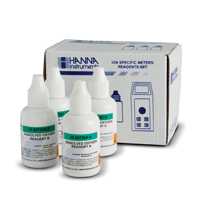Colorimeters
$121.42
AUD + GST
$133.56
AUD Inc. GST
$109.50
AUD + GST
$120.45
AUD Inc. GST
$109.40
AUD + GST
$120.34
AUD Inc. GST
$1,359.40
AUD + GST
$1,495.34
AUD Inc. GST
$859.10
AUD + GST
$945.01
AUD Inc. GST
Chlorine Meter for Free and Total Chlorine (0-3.50 ppm CL) IC-CL2006
Product code: IC-CL2006
$789.20
AUD + GST
$868.12
AUD Inc. GST
$609.10
AUD + GST
$670.01
AUD Inc. GST
$725.00
AUD + GST
$797.50
AUD Inc. GST
$128.21
AUD + GST
$141.03
AUD Inc. GST
$109.07
AUD + GST
$119.98
AUD Inc. GST
$109.07
AUD + GST
$119.98
AUD Inc. GST
$109.07
AUD + GST
$119.98
AUD Inc. GST
$109.07
AUD + GST
$119.98
AUD Inc. GST
$156.41
AUD + GST
$172.05
AUD Inc. GST
Free Chlorine and Ultra High Range Total Chlorine Portable Photometer - IC-HI97771
Product code: IC-HI97771
$496.80
AUD + GST
$546.48
AUD Inc. GST
$109.07
AUD + GST
$119.98
AUD Inc. GST
$109.07
AUD + GST
$119.98
AUD Inc. GST
$109.07
AUD + GST
$119.98
AUD Inc. GST
$109.07
AUD + GST
$119.98
AUD Inc. GST
$496.80
AUD + GST
$546.48
AUD Inc. GST
$496.80
AUD + GST
$546.48
AUD Inc. GST
$109.07
AUD + GST
$119.98
AUD Inc. GST
$109.07
AUD + GST
$119.98
AUD Inc. GST
Phosphorus ultra low range Checker HC colorimeter. Range: 0 to 200 ppb - IC-HI736
Product code: IC-HI736
$109.07
AUD + GST
$119.98
AUD Inc. GST
$496.80
AUD + GST
$546.48
AUD Inc. GST
Pool Line Phosphate low range Checker HC colorimeter (0.00 to 2.50 ppm (mg/L))
Product code: IC-HI7134
$109.07
AUD + GST
$119.98
AUD Inc. GST































